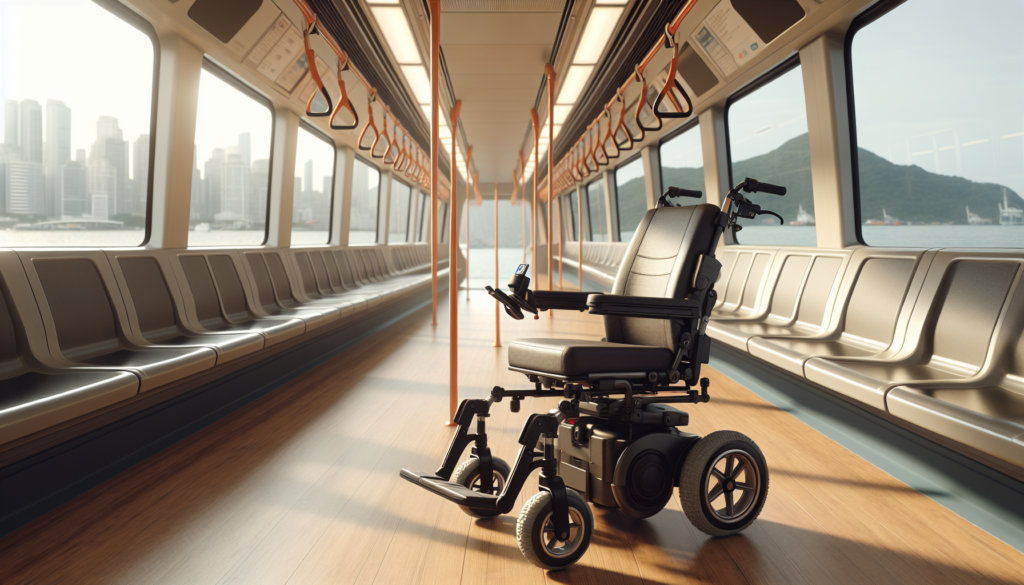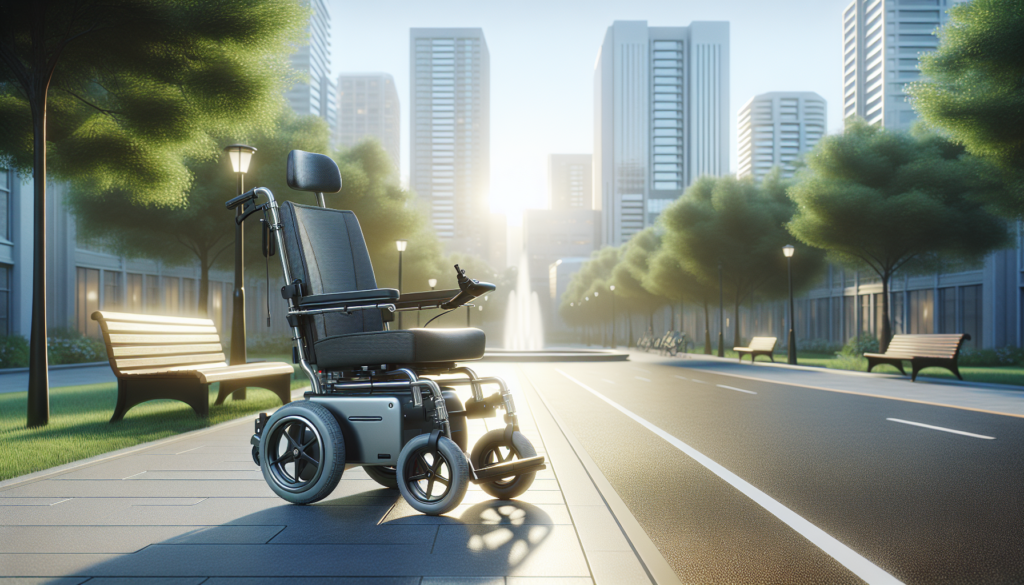
Electric wheelchairs have become invaluable tools for enhancing mobility and independence for many individuals. However, as with any machine, proper maintenance is crucial to ensure their longevity and optimal performance. Neglecting routine upkeep can lead to a decline in functionality, potentially compromising the safety and comfort of the user. By understanding the specific needs of your electric wheelchair, whether it’s an Edegree EW6, Edegree EW1, or the Stonbike TU-04, you can take proactive steps to maintain your equipment and enhance its usability over time.
Understanding Electric Wheelchair Components
Understanding the components of an electric wheelchair is crucial for maintaining its performance and ensuring longevity. Electric wheelchairs are equipped with various essential parts including the battery, motor, and gear system. For instance, wheelchairs like the Edegree EW6 and EW1 from EKO Life MY utilize lithium and lead-acid batteries respectively, both designed to provide a consistent range per charge. The Edegree EW6 offers a range of 10-15 km, whereas the Edegree EW1 boasts a more extensive range of 20 km, highlighting the importance of battery type and condition in optimal usage.
Regularly checking the battery, ensuring it is appropriately charged, and understanding how its performance affects the wheelchair’s overall range can prevent disruptions in daily activities and enhance user experience. Additionally, components such as the dual motors — including the Edegree EW6’s 24V 190W motor and the Edegree EW1’s 24V 250W motor — necessitate routine maintenance to prevent wear and tear. The gear system, often featuring multiple speed modes, should also be inspected to ensure smooth operation across different terrains. By familiarizing oneself with these components and prioritizing regular checks, users can maintain their electric wheelchair‘s efficiency and safety, making it a reliable mobility aid for years to come.
The Role of Battery Maintenance in Performance
Battery maintenance plays a crucial role in the performance and longevity of electric wheelchairs. For instance, models like the Edegree EW6 and Edegree EW1 utilize different types of batteries that require specific upkeep to ensure optimal functioning. The Edegree EW6 features a lithium battery, while the Edegree EW1 operates with a lead-acid battery. Regular monitoring of the battery’s charge status, clean terminals, and adhering to recommended charging times—such as the EW6’s 6 to 8 hours charging—are essential practices that not only enhance battery life but also ensure the wheelchair remains a reliable mode of mobility.
Users should strive to keep their batteries charged within the recommended thresholds, avoiding extremes that may lead to quicker deterioration. Additionally, attention to the battery’s overall health can prevent disruptions during use. Both the Edegree EW6 and the Stonbike TU-04 highlight the importance of assessing battery capacity and functionality regularly. The EW1 can cover up to 20 km on a single charge, showing the impact of proper battery care on achieving expected performance ranges. Ultimately, with the right battery maintenance strategies, electric wheelchair users can significantly improve their wheelchairs’ efficiency, reliability, and lifespan, ensuring a better experience overall.
Regular Inspection: Key Parts to Check
Regular inspection of key components in your electric wheelchair is crucial for maintaining its functionality and safety. Electric wheelchairs like the Edegree EW6 and Edegree EW1, which come with features such as dual motors and lithium or lead-acid batteries, require consistent checks to ensure optimal performance. Key parts to inspect include the battery condition, brakes, tires, and motor system. Look for signs of wear or damage, such as frayed wires or low tire pressure, as these can significantly affect the wheelchair’s operational efficiency and safety on various terrains. Make it a habit to check these components every month to prevent issues that could compromise your mobility.
Additionally, monitoring your wheelchair’s charging system is vital. For instance, the Edegree EW1 has a charging time of around six hours, while the Stonbike TU-04 can charge in three to five hours. Ensuring that the battery charges correctly not only extends its life but also guarantees that you won’t be stranded without power. Regular inspections and timely maintenance lead to improved reliability and performance of your electric wheelchair, ensuring that you can safely enjoy your freedom and independence without any unexpected setbacks.
Importance of Cleaning Your Electric Wheelchair

Keeping your electric wheelchair clean is vital for its longevity and optimal functionality. Dust, dirt, and debris can accumulate over time, affecting not only the aesthetics of the wheelchair but also the mechanical components. Regular cleaning helps prevent corrosion of metal parts, especially around the battery and motor, which can lead to costly repairs or even a complete breakdown. Furthermore, a clean electric wheelchair is essential for safety; dirt accumulation on the controls or brakes can impair the performance and responsiveness of the vehicle, potentially leading to accidents.
By setting aside time for routine maintenance, you ensure a smoother and safer ride. The process of cleaning your electric wheelchair should be thorough yet gentle. Use a damp cloth to wipe down surfaces, making sure to avoid excess moisture around electrical components. It’s also important to keep the wheels and undercarriage free from grime, which can hinder their movement and wear down the tires. Regularly checking and cleaning the battery terminals can enhance performance as well. Investing time in cleaning not only promotes the durability of your electric wheelchair but also enhances your experience and comfort while using it, ensuring that it serves you well for years to come.
Common Issues and How to Address Them
Electric wheelchairs, like any other mechanical devices, can encounter common issues that may hinder their performance and overall longevity. One frequent problem is battery malfunction, often stemming from improper charging habits or battery age. For instance, users of the Edegree EW6 should ensure they do not exceed the charging time of 6-8 hours, as overcharging or undercharging can lead to diminished battery capacity over time. Additionally, harsh environmental conditions can affect battery life, making it essential to store the wheelchair in a controlled environment when not in use. Regularly inspecting the battery and keeping it clean can help prevent these issues and ensure optimal functionality.
Another common challenge faced by electric wheelchair users is mechanical wear and tear, particularly in the motors and wheels. For example, the dual motor system in models like the Edegree EW1 and Stonbike TU-04 may experience reduced performance if not maintained properly. Regularly checking the wheels for debris, ensuring they are properly inflated, and lubricating moving parts can significantly extend the wheelchair’s lifespan. Users should also be vigilant about monitoring the wheelchair’s maximum load capacity to avoid stress on the motor and frame, which may lead to accelerating mechanical issues. Taking proactive measures can keep electric wheelchairs safe and efficient for years to come.
When to Seek Professional Maintenance Services
Moreover, particular preventive measures should be adhered to, such as battery maintenance and checking wiring connections. Dust and debris can accumulate in and around the motor, leading to efficiency loss and potential failures. If your electric wheelchair features advanced components like those found in models such as the Edegree EW6, which boasts dual motor functionality and a range-per-charge of 10-15km, it’s important to seek a professional for maintenance to ensure that all systems work harmoniously. Don’t hesitate to reach out to certified technicians who specialize in electric wheelchairs to ensure comprehensive care. Taking proactive steps can save you time, money, and more importantly, enhance your mobility experience for years to come.
Extending the Lifespan of Your Electric Wheelchair
Proper maintenance is essential for extending the lifespan of your electric wheelchair. Regularly checking and cleaning components like the battery, wheels, and motors can significantly enhance performance and longevity. For instance, ensuring that the battery is charged correctly and replaced when it reaches the end of its life cycle is crucial. Lithium batteries, like those in the Edegree EW6 and Stonbike TU-04, generally offer better longevity and performance than lead-acid batteries.
On the other hand, checking tire pressure and wear can prevent accidents and ensure that your wheelchair operates smoothly. Regular inspection of these systems can help identify potential issues before they escalate into costly repairs or replacements. Another critical aspect of maintenance is keeping your wheelchair free from dirt and moisture. Dust and water can accumulate in motors and other critical parts, leading to performance declines. Additionally, lubricate moving parts periodically to ensure a seamless operation.
For example, the Edegree EW1’s dual motor system benefits from such maintenance, allowing smooth transitions through its 5-speed mode. By committing to these maintenance practices, you can help maximize the performance and lifespan of your electric wheelchair, making it a reliable partner for your mobility needs.
Embrace Maintenance for a Better Journey

In summary, proper maintenance of electric wheelchairs is crucial for ensuring their longevity and optimal performance. Regularly checking battery health, inspecting tires, and cleaning mechanisms will not only enhance the lifespan of your wheelchair but will also contribute significantly to your overall safety and comfort while using it. Whether you own models like the Edegree EW6, EW1, or the Stonbike TU-04, committing to a consistent maintenance routine helps you make the most out of your investment, enabling you to navigate your environment with confidence and ease.
Moreover, understanding the specific requirements for each electric wheelchair model assists users in tailoring their care routines. For instance, while the Edegree EW6 offers a lightweight and agile option, its battery and motor maintenance differ from that of the Stonbike TU-04, which boasts a more robust climbing capability. By acknowledging these distinctions and following appropriate maintenance practices, you ensure that your electric wheelchair remains a reliable companion for years to come, empowering you to maintain your independence and mobility.

The importance of following manufacturer guidelines cannot be stressed enough. Manufacturers know their products best, after all.
We completely agree with you, Felicia! Following manufacturer guidelines is crucial for optimal performance and longevity of electric wheelchairs. At Eko Life Malaysia, we also emphasize the importance of manufacturer guidelines in our servicing and maintenance process. Please don’t hesitate to reach out to us for professional assistance or guidance on maintaining your electric wheelchair. You can contact us at [email protected] or +60 3-7890 3042.
This post highlights the importance of responsible ownership. Wheelchairs are not just devices, they’re lifelines for many individuals.
Thank you for sharing your thought-provoking perspective, Daniel. We’re glad you found the post informative and resonated with the importance of responsible ownership. At Eko Life Malaysia, we strive to provide top-notch services for electric wheelchairs, ensuring our customers can thoroughly enjoy their devices while prioritizing safety and comfort. If you have any questions or concerns regarding wheelchair maintenance, please don’t hesitate to reach us at [email protected] or +60 3-7890 3042. We’re here to help.
I couldn’t agree more. As someone who uses a wheelchair for mobility, regular checks on battery health and tire pressure have saved me from many a headache.
Thank you for sharing your personal experience, Alicia. It’s great to know that our advice on proper maintenance has helped you navigate your environment with confidence. We highly recommend sticking to your routine and keeping your electric wheelchair well-maintained to ensure your safety and comfort. If you have any concerns or questions about your wheelchair or maintenance schedule, please don’t hesitate to contact us at [email protected] or +60 3-7890 3042.